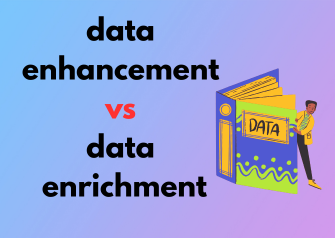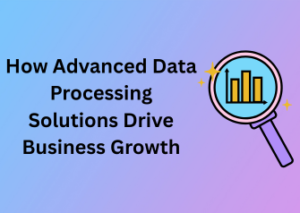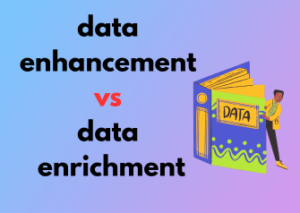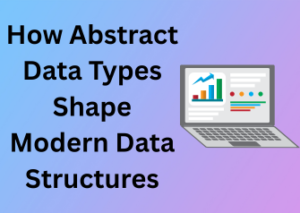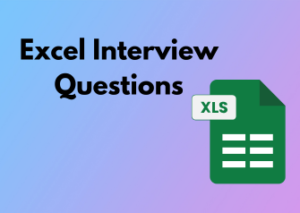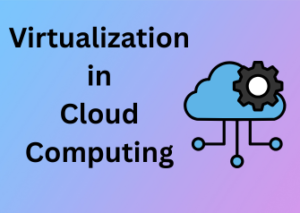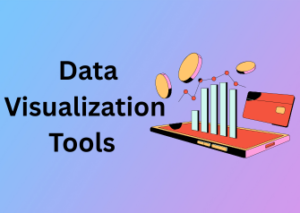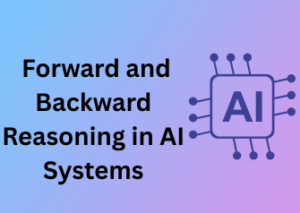The Quiet Differences: Defining Data Enhancement and Enrichment
At first glance, data enhancement and data enrichment might seem like interchangeable phrases in the world of data strategy, but don’t be fooled! They may sound similar, but each plays a distinct role in how organizations handle and make the most of their data. Understanding the difference isn’t just helpful, it’s essential if you’re working with data-driven decision-making.
What is Data Enhancement?
Let’s start with data enhancement. Imagine you’ve got a database full of customer information, but it’s missing details like phone numbers or email addresses. Enhancement swoops in to complete the gaps. It’s about adding substance to your existing information by bolstering it with missing elements. Think of it like upgrading a car, you’re not changing what the car fundamentally is, but you’re making it better, faster, and more complete.
Data enhancement also ensures that your existing data is accurate and fresh. That means rooting out errors, correcting inconsistencies, and ensuring all your records are up-to-date. It’s about making sure the data you already have can be trusted 100%, something critical for any business looking to turn insights into action.
What is Data Enrichment?
Now let’s pivot to data enrichment. If data enhancement is about filling in the blanks, enrichment is about adding depth and dimension. Enrichment takes the data you’ve already gathered and expands on it by providing broader context or integrating additional datasets. It’s like taking a simple map and layering on weather patterns, traffic conditions, or points of interest. The map didn’t fundamentally change, but now it tells a more nuanced story.
For example, you might enrich customer records with third-party data like demographics, buying behavior, or social media activity. This deeper understanding transforms raw data into something actionable, unlocking insights that weren’t obvious before. In essence, enrichment allows the data to “speak louder” by connecting it to a bigger picture.
The Key Differences
The easiest way to distinguish enhancement from enrichment is to think of it this way:
- Data enhancement improves what you already have internally. It fixes, updates, and completes gaps, ensuring your database is in top shape.
- Data enrichment goes the extra mile by pulling in external information to give your data context, depth, and broader usability.
Both methods are great tools, but they aren’t interchangeable. Enhancement ensures data reliability by focusing inward, while enrichment focuses outward to create new opportunities for business growth and storytelling.
Why Understanding the Difference Matters
In the real world, knowing the difference between enhancement and enrichment is critical for one big reason: efficiency. You don’t want to waste resources enriching incomplete or outdated data, nor do you want to just enhance information that doesn’t give deeper insights.
So, before diving into any data initiative, take a good, hard look at what you need. Does your data just need some internal polishing? Enhancement has you covered. Do you require an injection of fresh context for better decision-making? That’s a job for enrichment. By understanding these quiet differences, you’ll make smarter investments in your data strategy and avoid common pitfalls.
In the battle of enhancement vs. enrichment, it’s not about choosing one over the other, it’s about understanding when each one fits best. Ready to dig deeper into future data strategies? Let’s get started!
When More Data Isn’t Always Better: The Purpose Behind Enhancement
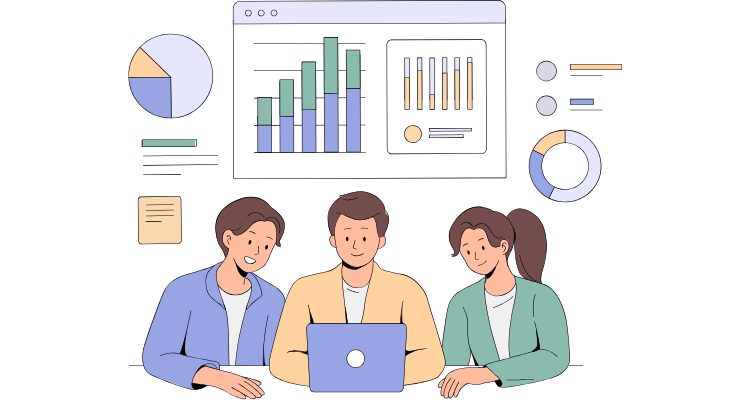
Hey there! Let’s talk about something we’ve probably all been guilty of in this data-driven world: chasing piles of data without really knowing if they actually help. It’s tempting to think that “more is better,” but when it comes to data, *quality* trumps quantity every single time. This is where data enhancement comes into play, and trust me, it’s a game-changer for making your data work smarter, not harder.
What Is Data Enhancement?
First off, let’s get clear on what data enhancement actually means. At its core, enhancement focuses on improving the quality or value of the data you already have. For example, you’ve got a list of customer email addresses, cool, but is that all you’ve got? By enhancing this dataset, you could validate the emails, weed out duplicates, or even cleanse typos. Essentially, you’re polishing your existing data to make it more reliable and actionable. Think of it like tidying up your closet, you’re not buying new clothes, you’re organizing what’s already there so you can actually find that favorite sweater!
Why Bother Enhancing Data?
Here’s the deal: messy, incomplete, or inaccurate data only leads to frustration. Whether you’re a marketer aiming for that perfect campaign, a data scientist building predictive models, or a business leader making tailored decisions, unreliable data is your Achilles’ heel. Enhanced data helps ensure smoother workflows and better outcomes, plain and simple.
Another key thing to remember is that enhancement isn’t about volume. It’s about streamlining and filtering out the noise so you can rely on the nuggets of information that truly matter. For instance, pinpointing outdated phone numbers may sound trivial, but when you’re trying to reach out to customers, those small tweaks can save your team hours of productivity and wasted effort.
Where Does Data Enhancement Shine?
- Accuracy & Consistency: Enhanced data reduces inconsistencies and errors—no more double-booked systems or users with three accounts.
- Compliance & Security: Regulations like GDPR and CCPA demand clean, well-handled data. Enhanced datasets are an easier win for audit trails and privacy obligations.
- Performance Improvements: In industries like retail or logistics, shaving seconds off data processing time due to better-catalogued data can elevate operations.
How to Get Started with Data Enhancement
Okay, now you’re probably wondering: where do I start? Start small. Begin with the data that impacts your goals the most—email lists, CRM records, or transaction logs. From there:
- Audit what you have: Look for gaps and inconsistencies. You’ve got to know the flaws before you can fix them.
- Automate what you can: Many data-cleaning tools exist to streamline enhancement tasks. A few clicks can save you hours of manual reviewing!
- Review regularly: Enhancement isn’t a one-and-done deal. Schedule periodic reviews to keep your data in tip-top shape.
Key Takeaway
So, here’s the big idea when it comes to enhancing your data: it’s not about collecting more but about making what you already have better. Data is a living, breathing asset that needs care and maintenance. By prioritizing precision and usability through enhancement, your decision-making processes, customer interactions, and team efficiency will thank you!
So, ready to give your data a little TLC? Start enhancing, and watch as clarity and confidence in your insights take shape!
Adding Context: How Enrichment Redefines Raw Data
Picture this: you’re hosting a dinner party, and you’ve got all the ingredients, the meat, the potatoes, the veggies. But something’s missing. Now imagine sprinkling in some spices, pairing the meal with the perfect wine, and setting the table with candles and fancy napkins. Suddenly, a simple meal turns into an experience your guests won’t forget. That’s exactly what data enrichment does for raw data—it takes your simple building blocks and adds layers of context, meaning, and depth.
Data doesn’t live in a vacuum. Sure, you might have names, addresses, or transaction records from your audience. But without context, those metrics are like that bland, unseasoned dinner, they only tell you part of the story. Enrichment gives data relatability and actionable value, elevating it beyond the raw numbers.
What Does Enrichment Look Like?
Imagine you have a database of customer email addresses. Enrichment would involve appending additional details such as:
- Demographics: Age, gender, or household income.
- Behavioral insights: Shopping preferences, browsing patterns, or purchase history.
- Geolocation data: Cities, regions, or weather patterns associated with their home address.
- Firmographics (for B2B businesses): Company size, industry, or job titles.
For instance, instead of simply knowing that “John Doe” is a customer, enrichment could reveal that he’s a 35-year-old avid cyclist living in Denver who frequently purchases outdoor gear in the spring. With details like these, brands can step into John’s world, tailoring their messaging and product offerings to his unique preferences.
Why Enrichment Matters
Simply put, context drives relevance. In the age of personalization, enriched data empowers organizations to make smarter decisions and create highly targeted campaigns, improving the customer experience. A few benefits of data enrichment include:
- Refined segmentation: By adding details to existing records, businesses can segment their audience into ultra-specific groups, ensuring that customers receive communications that truly resonate.
- Smarter predictions: Enriched datasets fuel better predictive analytics, helping companies anticipate needs or trends.
- Improved ROI: Enabling more accurate targeting reduces wasted resources in marketing efforts.
For example, a travel company might use enriched data to spot that Jane, a 45-year-old teacher, has booked family-friendly destinations in the past. With this context, they can send Jane personalized discounts for family packages during school holidays instead of bombarding her with irrelevant offers.
The Key to Effective Enrichment
It’s important to know that data enrichment isn’t just about adding tons of random information; it’s about adding the right information. The goal is to generate deeper insights, not clutter your database with unnecessary noise. For this reason, enrichment efforts should always be tied to specific business objectives.
Ask yourself:
- What do I want to know about my customers that I don’t already?
- How does this newly enriched data help drive a better experience or a sharper strategy?
Start with the Data You Have
The beauty of enrichment is that you don’t need to start from scratch. Leverage your existing dataset and explore options to integrate internal sources with external ones (e.g., purchasing third-party data services or utilizing APIs). By enriching the foundation you already have, you’ll amplify your data’s value exponentially.
Think of data enrichment as your secret ingredient, not overpowering on its own, but transformative in just the right amounts. By infusing additional layers of context, businesses can truly redefine how they approach and engage with their audiences.
IV. Common Missteps: Misunderstanding When to Enhance vs Enrich
Whether you’re a seasoned data analyst or just starting your journey into data management, it’s easy to get tripped up on when to apply data enhancement or data enrichment. These two concepts often seem interchangeable, but using one when you should be using the other can lead to inefficiencies, wasted resources, and missed opportunities. Don’t worry, though, this section will clear up the confusion and guide you toward better decision-making.
1. Focusing on Quantity Instead of Quality
One of the most common errors is assuming that adding more information, regardless of its relevance, is always a good strategy. This tends to happen when organizations lean heavily on data enrichment when they actually need data enhancement. If your dataset needs better accuracy, standardized formatting, or corrections for errors, enrichment won’t fix these issues. Imagine locking in additional details about customers before verifying basic details like email addresses or phone numbers. It’s like building on a shaky foundation—it may look solid for a while but is likely to collapse.
2. Using Enrichment as a “Catch-All”
Data enrichment often dazzles organizations because it involves sourcing exciting, external information that adds depth to datasets. However, enrichment should be handled thoughtfully. Think of enrichment as adding layers of context, such as appending demographic data to customer profiles or integrating social media sentiment scores. Without clear goals, enriching data for the sake of “more” can result in bloated databases that don’t deliver actionable insights. Always ask yourself: Is this new data driving a business decision, or is it just nice-to-have fluff?
3. Forgetting the Power of Enhancement
Many businesses overlook enhancement completely, skipping straight to enrichment because it’s more visible and trendier. But data enhancement is where the groundwork for efficiency and trustworthiness starts. Enhancement involves processes like deduplication, standardization, and filling in missing fields with verified information. Skipping this step is like buying a house and filling it with expensive furniture without fixing the leaky roof or cracked walls first. Ensuring your data is “clean” makes any enrichment efforts far more impactful down the line.
4. Overcomplicating or Confusing Your Goals
Another pitfall is when teams confuse their objectives or lose focus on what they’re trying to achieve. Are you refining existing customer profiles to improve their accuracy, or are you trying to bring in new, external insights to add depth? For example:
- Enhance: Edit an existing customer record to ensure phone numbers are valid and consistent across your platform.
- Enrich: Append third-party data to that customer record, such as their estimated household income or preferences, to better target your marketing campaigns.
By clearly distinguishing your goals upfront, you can avoid unnecessary confusion and allocate resources more effectively.
5. Neglecting User Buy-In and Education
This one is more human than technical! Sometimes, the real misstep comes from failing to educate your team on why you’re enhancing or enriching data, and what each process entails. When teams don’t understand these differences, they make incorrect assumptions that could lead to poor decision-making. Take the time to align your team’s understanding so everyone can use these processes to their full potential.
Bottom Line: Choose Wisely
When deciding between enhancement and enrichment, remember: the difference is in their purpose and application. Enhancement is about improving what you’ve got, while enrichment is about broadening your perspective by adding new data. By pinpointing your goals and taking these common missteps into account, you can ensure your data works smarter, not harder.
Where They Meet: Combining Enhancement and Enrichment in Strategy
When it comes to mastering the art of working with data, it’s easy to think of enhancement and enrichment as two completely separate processes. But in reality, these two approaches can come together in a beautifully strategic partnership. Think of it as peanut butter meeting jelly, distinct flavors on their own, but incredible when combined in the right proportion. Let’s explore how these two concepts join forces and why a balanced approach is key to supercharging your data strategy.
What Happens When Enhancement and Enrichment Collide?
First things first, let’s quickly revisit what each term means in this context (don’t worry, this won’t be a deep dive!). Data enhancement is all about building on the existing body of data you already have. You’re improving the accuracy, filling in blanks, and sharpening the edges. On the other hand, data enrichment is about giving your data layers of context; you’re adding external information that makes your raw data tell a more holistic story.
When you combine these two strategies, magic happens. You’re left with a data set that is not only clean, accurate, and streamlined (thanks to enhancement) but also rich with context, making it indistinguishable from pure gold (enrichment’s doing!). Together, they help you unlock insights that are deeper, more insightful, and actionable.
Why You Shouldn’t Overlook the Power of Combining Both
There’s an undeniable synergy at play here, and ignoring it could mean leaving significant value on the table. Say you’re working with customer records: enhancement ensures your contact details, transaction history, and behavioral data are consistent and current. Now, layer that with enrichment, such as incorporating demographics or pulling in social media behavioral trends, and suddenly you have the full picture of who your customer really is.
Pairing enhancement and enrichment isn’t just about achieving a polished final dataset, it’s about optimizing your decision-making process. The clearer and richer your data is, the more confident your business can be when taking action.
How to Use Both in a Practical Strategy
- 1. Start with enhancement: Begin by cleaning your data. Identify duplicates, correct inaccuracies, and fill in any missing values. Think of this step as getting your house in order.
- 2. Layer on enrichment: Once your data is well-structured, add external context. This could mean pulling in third-party information, such as social insights, industry-specific trends, or even geographic data.
- 3. Focus on an objective: Why are you using both techniques? For example, if you’re running a marketing campaign, enhanced and enriched customer profiles ensure that your targeting is laser-focused.
- 4. Experiment and iterate: Keep testing how enhanced and enriched data interact. The balance will look different depending on your use case, so be flexible and adapt.
Pro Tip: Automate Where Possible
Manually balancing enhancement and enrichment might feel like a daunting task, especially as your data grows. Thankfully, there’s no shortage of tools and software designed to help. Many platforms combine capabilities in data cleansing (enhancement) with contextual integration (enrichment), making the process seamless.
Real-life Use Cases: Industry-Specific Applications of Both Methods
Let’s be honest, data without context or refinement is like a raw gemstone: it has potential but needs a little *polish* to shine. That’s where data enhancement and enrichment come in. But how are businesses leveraging these approaches in the real world? Let’s explore how various industries are using these data strategies to their advantage with some tangible, real-world examples.
1. Retail: Personalizing the Customer Experience
Imagine walking into your favorite store and feeling like they *really* get you. That’s not magic; that’s data enhancement and enrichment at work! Retailers use data enhancement to clean and refine core customer databases, ensuring fewer duplicate records, updated contact information, and accurate demographic details. Meanwhile, data enrichment adds layers of external data, like geolocation or behavioral insights, to flesh out their understanding of customer preferences. This allows them to personalize emails and recommendations tailored to your taste, *and* get that new sweater into your cart faster!
2. Healthcare: Driving Patient Outcomes
In the world of healthcare, tapping into the power of data can save lives (literally)! Providers often use data enhancement to ensure patient records are accurate, updating addresses, removing duplicates, or filling in missing phone numbers. On top of that, data enrichment allows healthcare organizations to bring in external datasets, such as lifestyle information or environmental factors, to gain insights into patient health outcomes. For example, combining proper contact details with local pollution data might help predict asthma patients’ needs in specific regions. Saving lives? That’s the winning result of smarter data use.
3. Banking: Enhancing Risk Assessment
The financial sector thrives on making informed decisions at lightning speed. Banks use data enhancement to update customers’ financial records, ensuring that transactions, account details, and profiles are accurate. Then, through data enrichment, banks pull in external information like credit scores, economic conditions, or even social media signals to fine-tune assessments. Whether it’s approving a loan or preventing fraud, this mix ensures decisions are safer, smarter, and faster. Who knew your bank was quietly this data-savvy?
4. E-commerce: Dynamic Pricing and Smart Inventory
Ever notice how that pair of shoes in your shopping cart suddenly drops in price, or sells out in a flash? E-commerce platforms rely on enhanced internal datasets (like accurate inventory quantities) matched with enriched datasets, such as competitor pricing or real-time demand trends. This dual approach helps businesses dynamically adjust prices and ensure warehouses stock what customers want, when they want it. Talk about being one step ahead of the game!
5. Travel Industry: Predicting Preferences
Thinking about your next getaway? The travel industry uses data enhancement to ensure traveler profiles, frequent flyer numbers, loyalty accounts—are clean and actionable. Then, data enrichment steps in to add tasty extras like weather updates, historic booking trends, or social media sentiment analysis. This allows travel companies to offer irresistible destination deals that seem designed for you and you alone. Who wouldn’t want a vacation tailored to their exact interests?
6. Real Estate: Smarter Market Insights
House hunting has never been easier thanks to the marriage of enhancement and enrichment. Real estate companies clean up property databases with enhancement and use enrichment to layer information like local amenities, neighborhood crime rates, and school quality scores. Buyers get crystal-clear insights into their potential investment, and agents close deals faster. It’s a win-win!
Wrap-Up: Why These Methods Matter
At the end of the day, data enhancement and enrichment aren’t just buzzy terms, they’re game-changers. Whether it’s improving customer connections, sharpening risk assessments, or delivering more convenience to consumers, the applications are endless, as these examples show. By understanding how to apply both methods strategically, industries can refine what they know and broaden their horizons. And hey, doesn’t a polished gemstone look better than a raw rock?
VII. Tools of the Trade: Software Solutions that Handle Both Tasks
When it comes to data enhancement and data enrichment, having the right tools in your arsenal can make a world of difference. Let’s face it, manually sifting through massive data sets is not practical or efficient. Luckily, we live in a world where technology has stepped in to make these processes streamlined and highly effective. So, let’s dive into the tools designed to handle both tasks and how they can transform the way you approach data optimization.
Why the Right Tools Matter
Before we unpack the specifics, let’s clarify why these tools are so important. Whether you’re enhancing data (filling in missing information, correcting inaccuracies) or enriching it (adding meaningful context), the ultimate goal is to get better, actionable insights. But doing this manually is not only time-consuming but also prone to error. This is where software solutions step up, providing automation, accuracy, and efficiency.
Key Features to Look for in Data Tools
- Data Cleaning Capabilities: For enhancement, look for tools that can scrub your data, correct inaccuracies, and fill in missing fields effortlessly.
- Third-party Integration: Data enrichment requires pulling in external, contextual data. Pick tools that integrate easily with external data sources or APIs.
- Scalability: As your data grows, your tools should grow with you. Scalability ensures the software can handle increasing volume without compromising performance.
- Customizability: Every organization has unique needs. Tools offering customizable workflows ensure you can tailor them to your specific enhancement or enrichment goals.
- Real-time Processing: For competitive industries like retail or e-commerce, real-time data enrichment helps to make decisions faster and keeps datasets relevant.
Popular Tools in the Market
Here are some tried-and-tested tools that businesses of all sizes are using to ace both data enhancement and enrichment:
- Talend: Known for its robust data integration features, Talend simplifies the data cleaning process, which is essential for data enhancement. It also connects with external resources for enrichment tasks, making it a powerhouse option.
2. Adeptia: Recognized for its intelligent data automation capabilities, Adeptia streamlines complex data onboarding and transformation processes, crucial for effective data enhancement. Its AI- driven data mapping and seamless integration with external systems make it a powerful choice for end-to-end data connectivity.
3. Salesforce Customer 360: Excellent for sales and marketing teams, this tool enables both enhancement and enrichment directly in your CRM. It helps businesses maintain clean, complete records while layering in valuable context from external data streams.
4. Google BigQuery: A favorite among enterprises, BigQuery effortlessly handles large-scale data cleaning and provides integration options for pulling in third-party insights for enrichment.
5. Clearbit: Perfect for data enrichment, Clearbit makes it easy to append meaningful insights like company details or social media profiles to existing records.
6. OpenRefine: If you’re exploring data enhancement on a more budget-friendly scale, OpenRefine offers excellent data cleaning features and supports basic enrichment tasks with external API connections.
Pro Tips for Selecting a Tool
Making the right choice can feel a bit overwhelming, especially with so many options on the market. Here are a few pointers to guide you:
- Always assess your company’s unique needs. Are you focused more on enhancement or enrichment, or do you need both equally?
- Think long-term. The tool should adapt as your business, and data, evolve.
- Don’t skip the trial period! Most tools offer demos or trials, and it’s worth testing the waters before making an investment.
- Consider user-friendliness. The best tools aren’t much good if your team can’t use them efficiently.
Final Thoughts
The beauty of data science is the endless opportunities it offers when done right, and the right tools are your secret weapon. Whether you’re sprucing up your data through enhancement or giving it a meaningful makeover with enrichment, the right software can make these tasks not only manageable but also highly rewarding.
So, next time you dive into your data strategy, take a moment to evaluate if your toolkit is up to the challenge. With the right tools by your side, you’re not just keeping pace, you’re setting the standard for data excellence!

